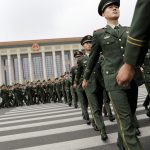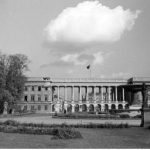THE WARSAW INSTITUTE REVIEW
Date: 4 December 2019 Author: Katarzyna Utracka
The Phenomenon of the Polish Underground State
The Polish Underground State, also known as the Polish Secret State, had been built in complete secrecy during the joint occupation of Poland by Soviet Russia and Nazi Germany. To this day it remains a world renowned phenomenon. Nowhere in occupied Europe was there an equally complex and well-working organisation, that came complete with its own administration, judiciary system, educational facilities and, most importantly, a well organised army. The most important task of the Polish Secret State was, alongside the organisation of underground activity, to provide the flawless functionality of the Polish state – the maintenance of the pre-occupation national institutions as well as making all necessary preparation for the power takeover after the end of war.
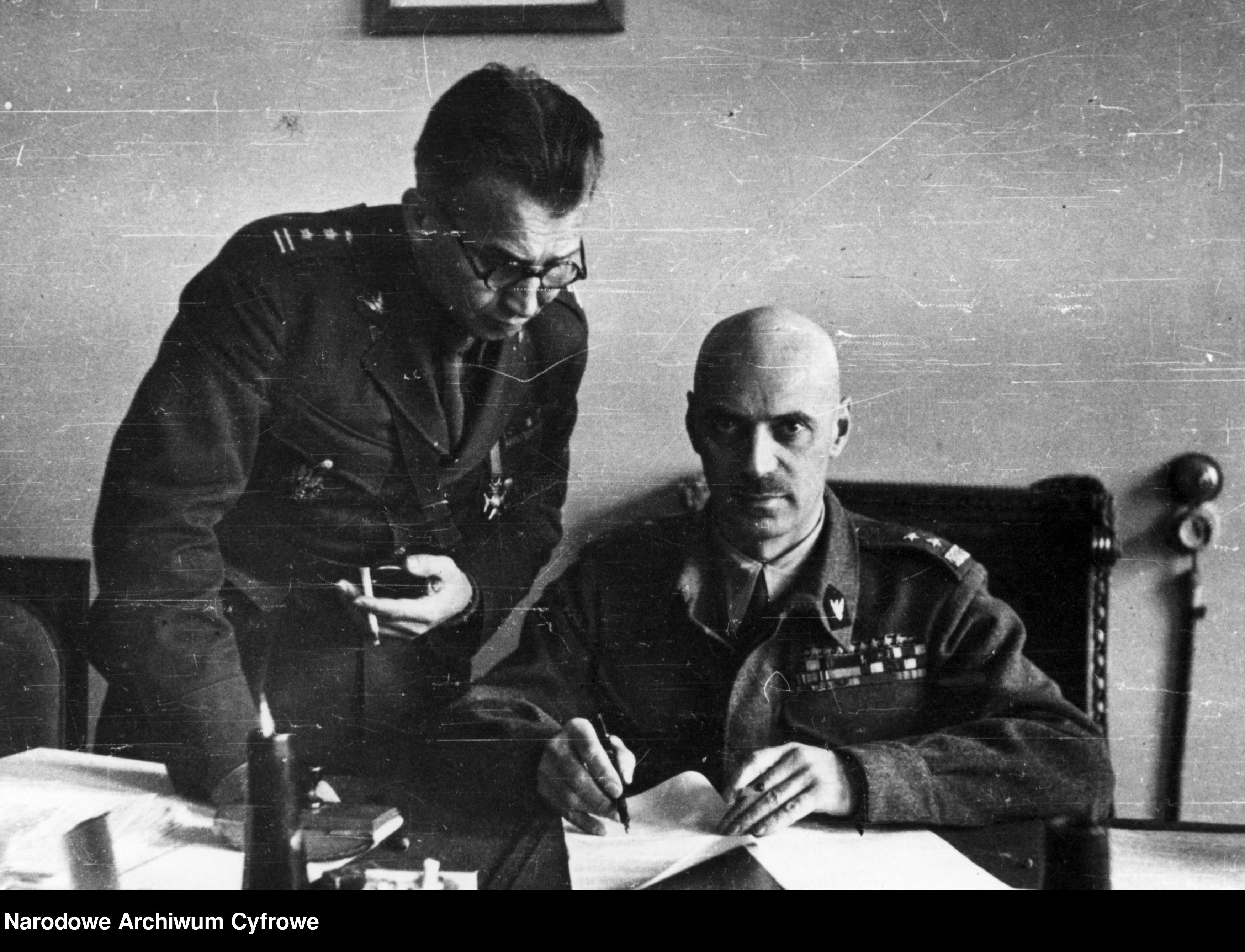
On 1st September 1939, the German Army, without officially declaring war, attacked Polish soil. A heroic fight ensued to defend the nation from the overwhelming enemy forces. When on 17th September the Soviet Army joined the Nazis by attacking Poland from the East, the fate of our nation had been sealed. At the beginning of Fall 39’, the Polish state found itself under the rule of two ruthless occupation forces: The Soviet Union and the Nazi Third Reich, that without wasting any time began to fulfil their dreadful plans – to wipe the Polish society out of their native land.
The part of Poland that fell into German hands was further divided into the Third Reich and the General Governorate. The territories added to the Third Reich were to be forcefully germanised while the General Governorate land was treated as a source for cheap slave-like labour. On top of countless executions, random arrests, forced resettlements and food rationing, the Germans have been working tirelessly to erase any national identity from the people of Poland. A ban on any political parties had been introduced while at the same time education was purposefully limited, cultural institutions were shut, and any press being printed was under the careful eye of Nazi propaganda experts. Furthermore, Germans obstructed all religious practices and conducted careful looting and even destruction of Polish cultural and historic heritage.
The situation was not much better in the Eastern parts of Poland that fell under the Soviet occupation. Terror was used as a widespread tool of cohesion. Forced deportations were being conducted where thousands of poles were relocated deep into the uninhabited territories of the Soviet Union. Those who according to Soviet commanders could potentially disrupt their plans of wiping out any remnants of Polish society and culture were executed without trail.
Despite the constant threat, the Poles had quickly undertaken actions aimed at fighting the occupational forces. These were not random and uncoordinated actions, but instead were planned and run by the Polskie Państwo Podziemne, or Polish Underground State, with its capital still in Warsaw. The PPP always acted with consent and in direct contact between itself and the legitimate Polish Government, that due to the Soviet and Nazi aggression was forced into exile and operated alongside Polish allies in the West – first in France, and then in the United Kingdom. It was from there, that after some personal changes, the Rząd na Uchodźstwie, or Polish Government in Exile, was able to control both the civil and military administration on the Polish territory. The Polish Government in Exile was widely recognised by the international community and was established in full accordance with the Polish pre-war Constitution – thus guaranteeing the continuity of all state institutions. This was important as it was these institutions that had the major impact on the legal functioning of the PPP, giving it the full, lawful legitimacy – something unheard of amongst other European resistance movements.
Hidden Operationality
The first secret anti-occupation organisations were beginning to take shape as early as September 1939, while some defensive fighting was still ongoing in the central parts of the state. Until the end of 1939 in the city of Warsaw alone, as many as 40 different secret resistance organisations were formed, majority of which were either strictly military or a mix of armed force and political ideas. By 1940 this number skyrocketed to reach an impressive 140. It was also then, that the lengthy process of unifying the entire Polish underground movement begun, thus decreasing the number of completely independent organisations to a minimum. The most important and arguably also most symbolic moment in the entire process of creating the PPP was the establishment of the Służba Zwycięstwu Polski, or Service for Poland’s Victory, under the command of General Michal Tokarzewski-Karaszewicz. The Service was formed on 27th September 1939 in Warsaw, only days before the unconditional surrender of the city. The organisation became a de facto mother organisation for the Związek Walki Zbrojnej, or Union of Armed Struggle, later renamed as the Armia Krajowa, or as known across the world, the Home Army – the famous armed forces of the Polish Secret State.
For the next five years, life in occupied Poland was split into two completely different worlds. The first of these, the unconcealed world, was characterised by daily random arrests and forced relocations associated with slave labour. The second of these worlds was concealed – this is where all operations aimed at weakening and destroying the occupation force were being carried out. These included the popularisation of anti-German slogans, armed attacks aimed diminishing the Nazi Germany’s military might, all the way into executing the Polish collaborators, which were far fewer than in any other state, as well as important figures working for the German terror apparatus. Despite the brutal occupation, the Poles were also able to rebuild their cultural, social, charitable, self-helping and ideological sentiments that pushed them into supporting the PPP.
Structure and Main Goals of the Polish Secret State
The main goal of the PPP was to continue the struggle for independence and the re-establishment of the physical Polish state. As such, constant preparations for the armed struggle were being made, but before it could begin, a different warfare was being fought. It included intelligence gathering, sabotage, diversion and most importantly, the civilian struggle which focused on fighting the occupation force in all spheres of Poles’ everyday life. On top of fighting the enemy, the PPP was also actively taking care of its inhabitants by supporting secret education courses, establishing its own media, and promoting various cultural and historical activities, including the documentation of German crimes. Furthermore, several actions were undertaken that focused exclusively on the drafting on Polish state post-war, its social and economic characteristics as well as the general place on the geopolitical map of the post-war Europe.
The Polish Secret State rested on two main pillars: the civilian and the military one. ‘It was only when the civilian activities of the Polish underground movement were combined with its military capabilities was when this entirely unique creation, now known as the Polish Underground State born. It was unmatched to anything known before in the history of the Polish state and the history of WWII as such’ – recalled one of its members, Stefan Korboński.
The civilian part of the PPP was known as the Delegatura Rządu na Kraj, or Government Delegation for Poland, that consisted of numerous departments that were similar in structure and name to the pre-war government Ministries. These departments dealt with issues such as judiciary, social care, farming, press and information services, education and culture as well as war relief, rebuilding efforts and foreign affairs. The Government Delegation for Poland was run by a Government’s Delegate for Poland who was later given the title of the Deputy Prime Minister, with his deputies becoming Ministers. The Delegate was the highest-ranking representative of the Polish Government in Exile in France and later in the UK. He was responsible for all underground activities in occupied Poland and personally headed the efforts to establish directions and means of social resistance against the occupation forces. He was also preparing his government for the overtaking of power in Poland when the country is finally liberated.
Political parties were amongst on the of the key elements of the PPP. It is estimated that there were approximately 50 of them operating within the underground state. The representatives of the main political forces such as the socialists, the Christian democrats, nationalists and peasants were amongst the men who made up the Radę Jedności Narodowej, i.e. the Council of National Unity, a parliamentary-like structure that had an advisory and opinion-forming functions.
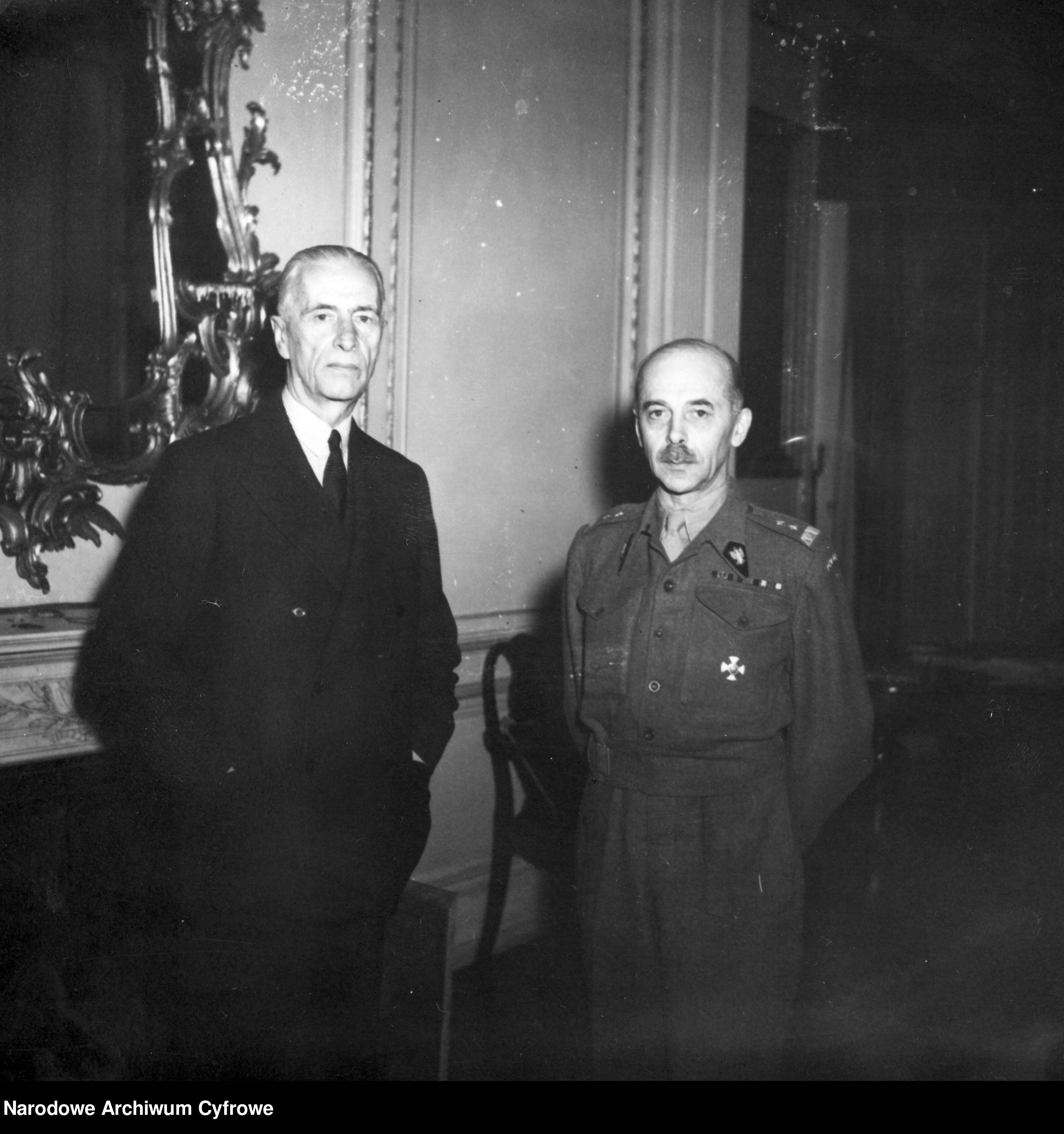
The Army of Volunteers
An army was the integral part of the Polish Secret State and derived directly from the Polish Armed Forces that fought against the occupation forces continuously, starting on 1st September 1939. They were first known as the Służba Zwycięstwu Polski; the Service for Poland’s Victory, but was later renamed into the Związek Walki Zbrojnej; the Union of Armed Struggle. In February of 1942, the Union was renamed yet again, this time into the now famous Home Army (Armia Krajowa). Before this last change was able to take place, a large-scale operation needed to be conducted in order to fully combine its different units and teams. These actions were coordinated by General Stefan ‘Grot’ Rowecki and was later continued by the Head of the Home Army, General Tadeusz ‘Bór’ Komorowski all the way until the outbreak of the Warsaw Uprising in 1944. Thanks to their heroic actions, the largest underground armed formation in Europe was conceived, consisting of approximately 300 000 soldiers in 44’.
This mighty army consisted of people who voluntarily agreed to join its ranks. It was led by professional army officers, some of whom were not mobilised in 39’ but did so later as they preferred underground struggle rather than being prisoners of war somewhere in Germany or Russia. With time, the junior officer positions were filled with soldiers who gained their ranks in secret officer schools. The ‘Cichociemni’ – polish commando operatives trained in the UK and then stealthily moved to Poland came out to be a great support for the underground Polish Army. Once on the occupied territory, they would take over the command of a local resistance movement and performed intelligence and sabotage-focused operations. From amongst over 300 trained Cichociemni soldiers, 1/3 died fighting the German forces. The functioning of this enormous volunteer army would not have been possible without the mass support from the Polish society.
The main objective of the Home Army was to fight for the independence of Poland. The underground Polish Armed Forces were gathering weapons and training constantly, thanks to having a complex network of gun and explosives production workshops. All of this was done in preparation for the armed national uprising to come. Its outbreak was planned for when a decisive allied offensive would come swooping through Poland. In the meantime, numerous sabotages, intelligence and diversion operations were conducted on the daily basis. The Home Army’s Intelligence Service did not focus solely on Polish territory but instead operated both in the homeland and hundreds of kilometres away from the Polish borders. Its significant role has been much appreciated by the allied forces since it conducted numerous successful operations and helped the allies in uncovering the technical mysteries behind the Nazi weapons, such as the famous V-1 and V-2 rockets.
Younger Poles, including Scouts have been involved in operations often related to as ‘small sabotage’. This included, but was not limited to, the distribution of anti-German propaganda, the distribution of leaflets, attacking cinemas playing German movies with smelly substances and painting of the special ‘anchor’ symbol. It was an official symbol of the Polish resistance movement and comprised of letters ‘P’ and ‘W’ crossed together to depict an anchor. The letters ‘PW’ stand for Polska Walcząca, or Fighting Poland. It became not only a symbol of Polish resistance and the fight against the German forces but was also used to boost the morale of Polish civilian population. In no time the ‘anchor’ become a symbol of the entire Polish Underground State. According to the order given out by the Commander General of the Home Army in March of 1943: ‘Our aim is to taunt the enemy and deal harmful blows to his troops by sabotage and diversion operations. We shall also employ revenge attacks for when the civilian population is harmed by the enemy. (…) The revenge operation should by conducted under unit’s own name but, where possible, the Fighting Poland symbol should be left in a visible spot’.
The Nazi attack on Soviet Russia has changed the situation in Poland by putting its whole territory under the German occupation. Furthermore, it was also being used as the supply zone for the whole of the Nazi Eastern Front. This new situation has led to the increase numbers of sabotage operations conducted by the Home Army that were predominantly aimed at the wartime industry of the Third Reich. According to some sources, from the beginning of 1941 all the way until June 44’ more than 700 trains had been blown up and 400 were set on fire. This led to the destruction of a total of 14 000 train carts and the destruction of 38 bridges.
Support Us
If content prepared by Warsaw Institute team is useful for you, please support our actions. Donations from private persons are necessary for the continuation of our mission.
The Underground Judiciary System
The underground judiciary system has been one of the most features of the Polish Secret State. It has been rebuilt from scratch at a huge cost, following its collapse after the German invasion. The main goal of the underground judiciary was to maintain the loyalty of Polish civilians towards the PPP and the rules it has been setting. It was also aimed ad showing the society, that any acts of treason and collaboration with the occupation forces will be punished. The aim was to deter anyone from working for the Germans and to strengthen the belief that justice will eventually be served by the Polish state if any crimes were committed.
The first death sentences on traitors and Gestapo collaborators have been conducted by the end of 1939 by the local units of the Służba Zwycięstwu Polski, or Poland’s Victory Service, and later the Związek Walki Zbrojnej, or Union of Armed Struggle. By the spring of 1940 a full underground judiciary system became operational. Both civilian and military Special Courts have since then been sentencing people to death for treason, collaboration, espionage and the torturing of the civilian population. Those demanding ransoms from Jews in hiding or from Poles giving them shelter as well as providing paid information about hiding Jews to the Germans were also severely punished. Such acts were treated just like any other treason and were punishable by death.
More than 350 death sentences have been given out to people by the Warsaw Military Special Court alone. Death sentences were being carried out by the special units of the Home Army and all information regarding the killings was being released to the underground press.
Underground Education
The most common sign of the continuous existence of the Polish society was the existence of the secret education system that run despite the ongoing occupation. It is important to remember that the German occupiers have completely abolished middle and higher education in Poland, leaving the Polish youth with only primary and vocational schools, all with very limited schooling programme. SS Reichsführer Heinrich Himmler has demanded that: ‘(…) the Polish society in the East should not have access to schools higher than the 4-year primary school. The objective of such school should be to teach Poles how to do simple calculation, up to no higher than 500 and how to write their own surname. Furthermore, teachers should tell them that it is a God’s command that they should always obey Germans while being hard working and honest. Learning the ability to read is by no means a priority’.
Thanks to the tremendous involvement from thousands of teachers, a well-developed network of underground schools was created where Polish youth could learn freely. Thousands of high school pupils were able to continue with their education in areas such as history and native language. They were even able to pass their secondary school certificate exams called ‘Matura’ in Polish. There were over 6,500 such certificates issued by underground schools in Warsaw alone. What is more, Poles were also able to establish underground higher education centres that taught students to be linguists, historians, mathematicians and doctors. During the entire duration of the WWII, over 10,000 students were able to complete their underground universities. Many of those involved in secret education were put in prisons, concentration camps or even killed.
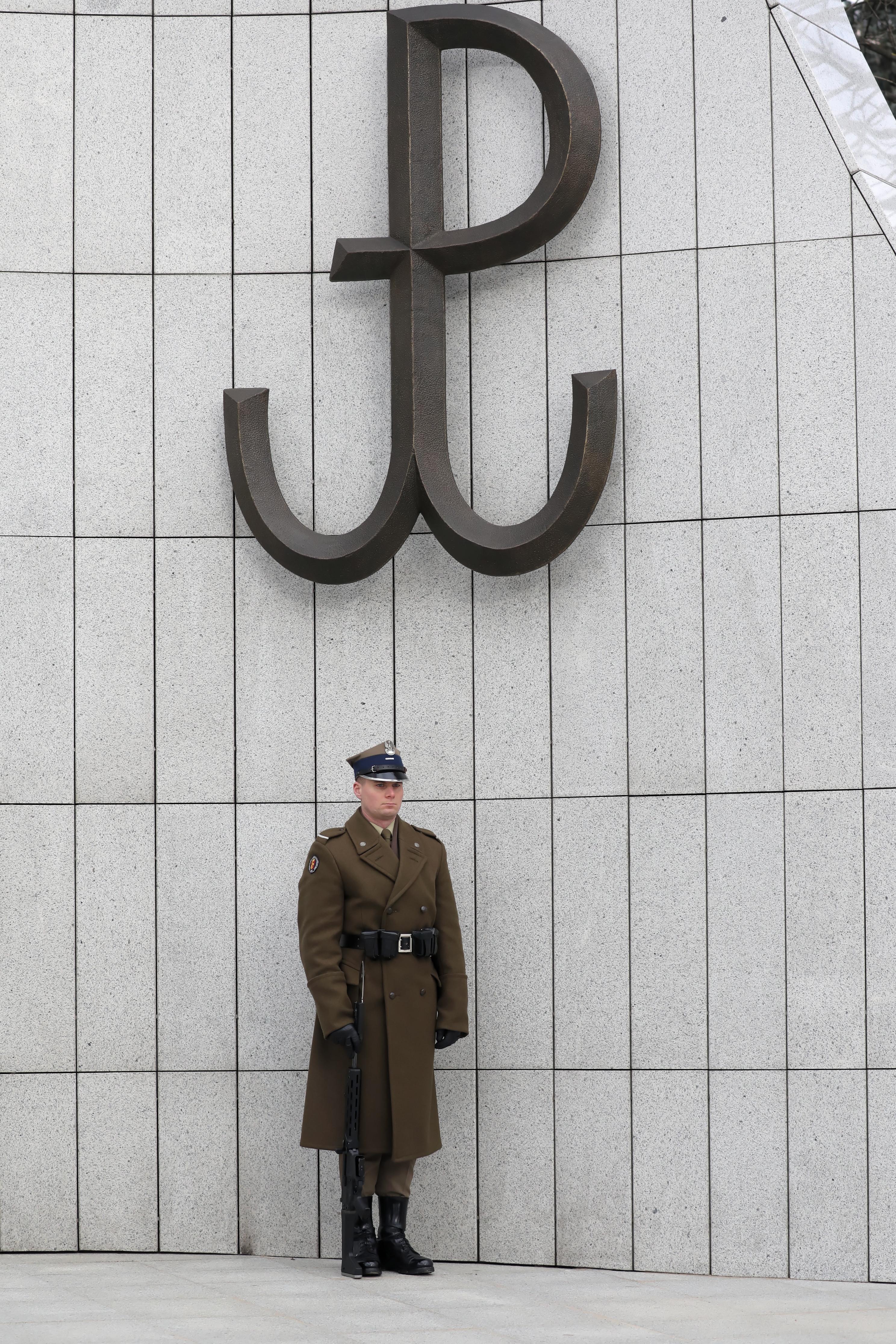
The Underground Press
Another key mean of completely erasing Polish national identity by Germans was the destruction of all Polish press and editors. Printed text become an important tool in the Nazi plan to break the Polish nation. Throughout the entire period of occupation, the Germans employed as much as 40 different press titles, all printed in Polish, to spread their propaganda. They were all commonly referred to as ‘gadzinowki’ and reading them was considered as wrongdoing. These newspapers were often filled with articles aimed at persuading the readers that the Polish nation is unable to exist on its own, without the German presence.
In response to the destruction of Polish independent press, an underground press movement was quickly established in its place. Different secret organisation had their own press titles. Articles in such secret newspapers focused predominantly on crimes against Poles that Germans hid from the society as well as providing information about Allies military victories. They were also aimed at establishing and strengthening of patriotism among the population. The scale of these projects was immense. Over 700 different newspaper titles as well as books were published throughout the war in the city of Warsaw alone.
‘Żegota’
By the end of 1942 the Government Delegation for Poland has established a Polish Council to Aid Jews (in Polish, the Rada Pomocy Żydom przy Delegaturze Rządu RP na Kraj) and given it a codename: ‘Żegota’. It was a continuation of the Provisional Committee to Aid Jews (in Polish, the Tymczasowy Komitet Pomocy Żydom) that has been established months earlier. It was a single government-supported organisation in the whole of occupied Europe that was established with a goal of helping the Jewish population. One of its founding members, Władysław Bartoszewski recalled: ‘(…) this was the first organisation, where the members of the Bund party, Zionists, Catholics, Polish democrats, socialists, peasants – all either Jewish or Polish worked together against the Nazi occupiers’.
On top having its central HQ in Warsaw, ‘Żegota’ also operated in different Polish cities. Its members were tasked with organising help for Jews being kept in ghettos or those hiding away from them. Within the organisation, several specialised bureaus existed that dealt with all sorts of issues: legalisation, financial, housing, counter-ransom, propaganda, provincial, medical and clothing. A child-focused bureau also existed and dealt with helping Jewish children by finding shelter for them in Polish families, orphanages and in other similar institutions. Irena Sendlerowa, who was nominated to the Nobel Peace Prize, has become a symbol of the movement as it was thanks to her immense courage and devotion that over 2,500 Jewish children were saved from the certain death in the ghettos by her alone. It is worth remembering that helping Jews was punishable by death and the sentence was carried out not only on the offender but also a randomly captured group of Poles to emphasise the severity of the crime.
The Fight
In January 1944 the Soviet Red Army has crossed the pre-War borders of Poland. Yet again, Poles were forced to face the threat of Soviet aggression. The General Command of the Home Army has drafted a plan codename ‘Burza’, or ‘Tempest’, that aimed at conducting attacks on the back of withdrawing German forces. Nevertheless, both the military victories as well as a well running cooperation with the Red Army did not help the Home Army in securing the political objectives so much desired by the PPP. The NKVD operatives together with the Soviet counterintelligence that entered Poland together with the advancing troops quickly begun arresting anyone claiming to represent either civilian or military underground government of Poland. The Home Army soldiers were disarmed and forced to join the Red Army or sent to labour camps deep inside the Soviet Union.
In the summer of 1944, the Red Army has arrived on the outskirts of Warsaw. After nearly 5 years of enduring German terror the Polish capital was ready to finally fight the occupier. German failures on the Eastern and Western fronts as well as the failed assassination attempt on Hitler were only some of the signs that the Third Reich was already doomed. The commanders of the Polish Secret State wanted to liberate Warsaw using only their own forces, before the Red Army troops enter the city. It was supposed to be a strong sign that all this time the Poles continue to fight the Germans and that they are still determined to win back their independence.
On 1st August 1944, the Varsovian citizens responded to the patriotic call to arms and the Warsaw Uprising had begun. The uprising meant that the PPP and its armed forces – the Home Army could leave the hiding and begin an open fight with the German army. For over two months Polish democratic institutions were able to operate freely. Although controlling only on a small patch of land within the besieged Warsaw, Poles were able to establish state administration there and even openly run political parties that published their own press. There have even been two radio station (Polish Radio and ‘Błyskawica’) operating in the constantly shelled city of Warsaw. Their broadcasts could have been heard as far as in the United Kingdom. The Post Office was also running and so where the military and civilian law enforcement agencies as well as charities and social aid bureaus helping the inhabitants of the city.
Despite all these efforts, faced with lack of adequate support from the Allies, huge civilian casualties and the overwhelming technological advantage of the German forces the General Command of the Home Army was left with no choice but to eventually stop the heroic fight. The Warsaw Uprising lasted for 63 days and was one of the bloodiest street battles ever in the history. It was also the biggest and most violent battle in the whole history of Poland.
Epilogue
After the fall of the Warsaw Uprising and despite the huge casualties, both the Home Army and the Government Delegation for Poland decided to reassume their operations. On 19th January 1945 when most of the Polish territory was already under the Red Army control, the last commander of the Home Army, General Leopold ‘Niedźwiadek’ Okulicki decided to disband the Home Army. Only the Government Delegation for Poland and its Council of National Unity remained operational, still in deep secrecy.
At the end of March 45’ the NKVD has arrested the heads of the Polish Secret State. Amongst those captured were: the last Commander of the Home Army, General Leopold „Niedźwiadek”, Okulicki, the Chairman of the Council of National Unity Kazmierz Pużak, the Government Delegate for Poland and de facto Deputy Prime Minister Jan Stanisław Jankowski as well as the heads of all main political parties. A Joseph Stalin-orchestrated trial of those arrested took place in mid-June 1945 in Moscow. The main goal of putting the heads of the PPP on trial was to smear all those involved in the operations of the Polish Secret State and to denunciate all Poles who opposed Soviet domination in front of the Western European states. Fake allegations of collaborating with Nazi Germany were amongst some of the techniques used to achieve this cunning goal. All arrested have been sentenced to prison but in practice three of the convicts (including General Okulicki) were killed (Gen. Okulicki died in Soviet prison in unexplained circumstances).
At the same time, in accordance with the agreement reached between the ‘Big Three’ in Yalta, a communist Provisional Government of National Unity was established in Poland that was completely subordinate to the Soviet Union. By agreeing to this, the free world withdrew its support for the Polish Government in Exile which led to the dissolution of the Government Delegation for Poland and the Council for National Unity.
On 1st July 1945 the last appeal of the Council for National Unity was published that contained the Last Will of the Fighting Poland. The appeal was to be one final message of the Polish Underground State. ‘The decision to dissolve the Council for National Unity should not be viewed as the spiritual capitulation of the Polish nation. The aims that the Fighting Poland movement strived to achieve still stand. We strongly believe that those involved in the PPP will not cease their struggle until our main goals of regaining full independence and establishing a democratic system in Poland will not be met’.
The fulfilment of all pledges that were included in the Fighting Poland’s Last Will, such as the regaining of independence and freedom, was possible only half a century later.
All texts published by the Warsaw Institute Foundation may be disseminated on the condition that their origin is credited. Images may not be used without permission.

